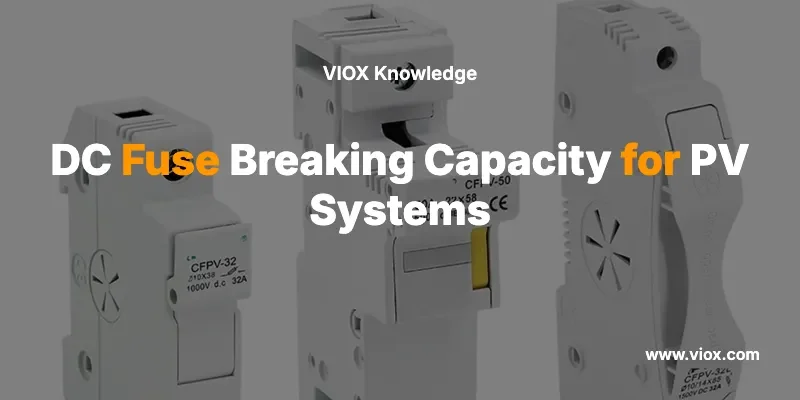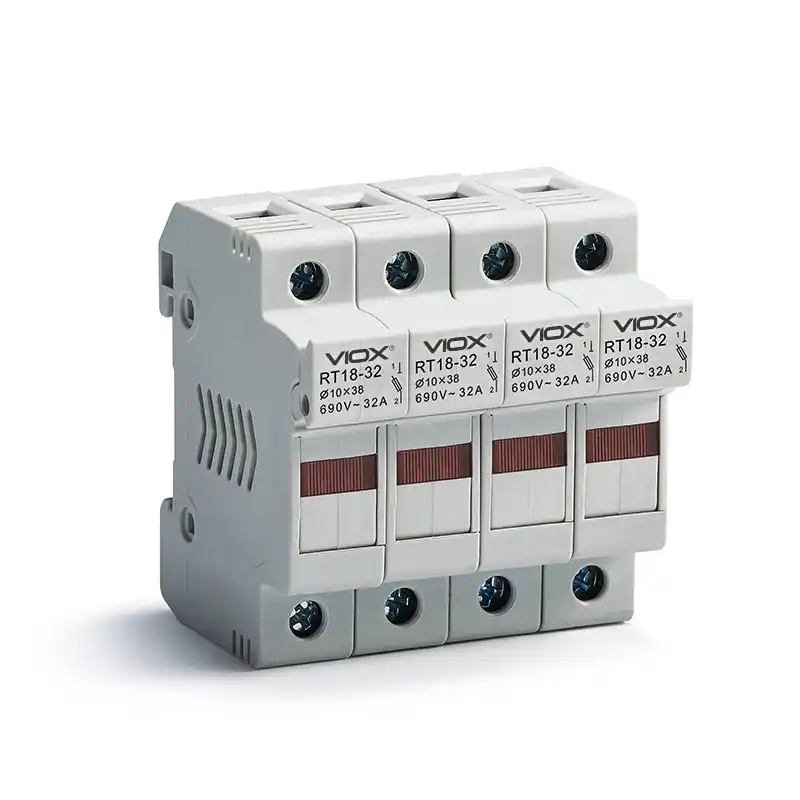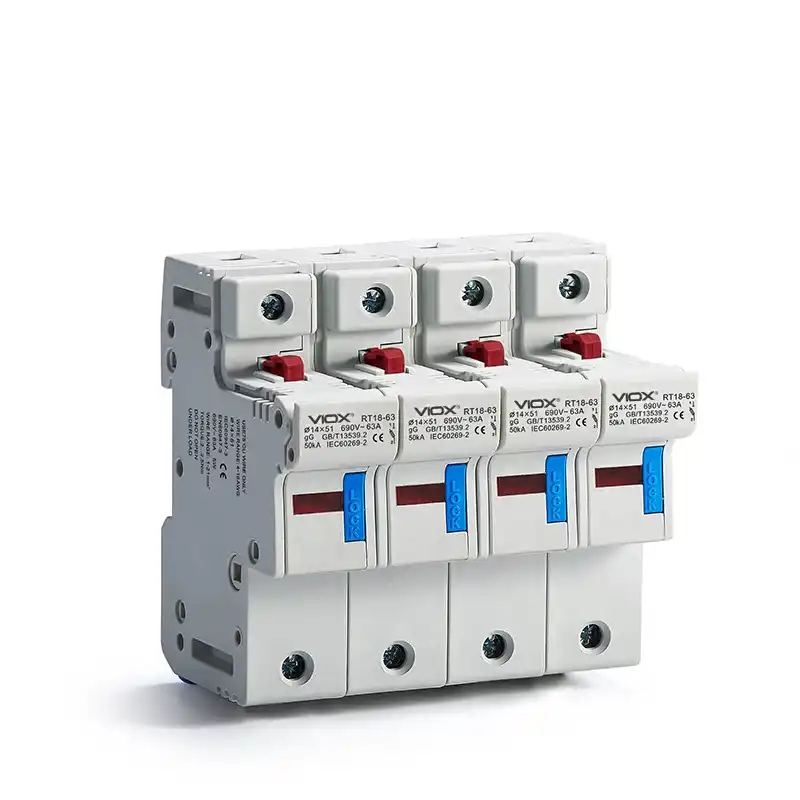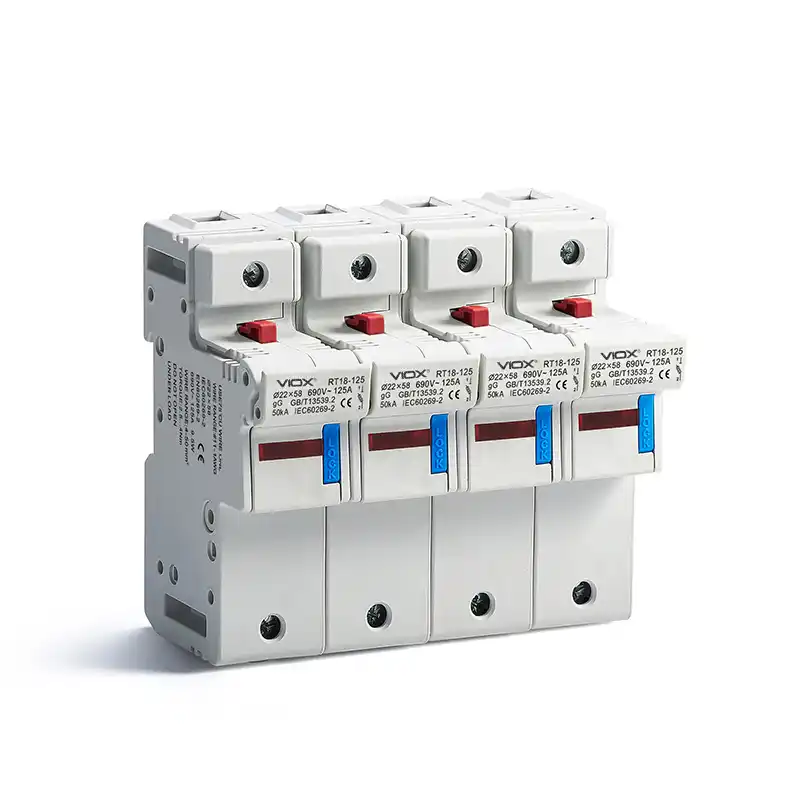Breaking capacity for DC fuses in PV systems is the maximum fault current a fuse can safely interrupt without causing damage or creating safety hazards. For photovoltaic installations, this typically ranges from 600A to 30,000A depending on system size and design, with most residential systems requiring fuses rated between 1,000A to 10,000A breaking capacity.
Understanding DC fuse breaking capacity is critical for solar system safety, code compliance, and preventing catastrophic failures that can lead to fires, equipment damage, or personal injury. Unlike AC systems, DC circuits present unique challenges that make proper fuse selection essential for reliable protection.
What is Breaking Capacity in DC Fuses?

Khả năng phá vỡ (also called interrupting capacity or fault current rating) represents the maximum current a DC fuse can safely interrupt during a fault condition without sustaining damage or creating dangerous arcing.
Key Definitions for PV Systems
- Khả năng phá vỡ: The maximum short-circuit current a fuse can interrupt safely, measured in amperes (A) or kiloamperes (kA).
- DC Fault Current: Abnormal current flow in photovoltaic circuits caused by equipment failure, wiring problems, or ground faults.
- Prospective Short-Circuit Current: The theoretical maximum current that could flow in a circuit during a fault condition, calculated based on system design parameters.
- Time-Current Characteristic: The relationship between fault current magnitude and the time required for the fuse to operate.
DC vs AC Fuse Breaking Capacity: Critical Differences
| Diện mạo | DC Fuses | AC Fuses |
|---|---|---|
| Sự tuyệt chủng của hồ quang | No natural current zero crossing | Natural zero crossing every half cycle |
| Khả năng phá vỡ | Typically 600A to 30,000A | Often higher due to easier arc extinction |
| Xếp hạng điện áp | Phải xử lý điện áp DC liên tục | Benefits from AC voltage reversals |
| Arc Duration | Longer, more sustained arcs | Shorter arcs due to zero crossings |
| Kích thước vật lý | Often larger for same current rating | More compact design possible |
| Trị giá | Generally higher due to design complexity | Lower cost for equivalent ratings |
| Tiêu chuẩn | IEC 60269-6, UL 2579 | IEC 60269-1, UL 248 |
Expert Tip: Why DC Breaking Capacity Matters More
DC circuits create sustained arcs because there’s no natural current zero crossing to help extinguish the arc. This makes adequate breaking capacity absolutely critical for safety – never compromise on this specification.
Breaking Capacity Requirements for Different PV System Types

Residential Solar Systems (2-20kW)
| System Size | Typical Breaking Capacity | Ứng dụng phổ biến |
|---|---|---|
| 2-5kW | 1,000A – 3,000A | Small residential rooftops |
| 5-10kW | 3,000A – 6,000A | Medium residential installations |
| 10-20kW | 6,000A – 10,000A | Large residential or small commercial |
Commercial Solar Systems (20kW-1MW)
| System Size | Typical Breaking Capacity | Những cân nhắc về thiết kế |
|---|---|---|
| 20-100kW | 10,000A – 15,000A | Multiple combiner boxes |
| 100-500kW | 15,000A – 25,000A | Central inverter designs |
| 500kW-1MW | 25,000A – 30,000A | Utility-scale installations |
Utility-Scale Systems (1MW+)
Breaking Capacity Range: 30,000A and higher
Special Requirements: Custom engineered solutions with enhanced arc flash protection
How to Calculate Required Breaking Capacity
Step 1: Determine Maximum Short-Circuit Current
Calculate based on the worst-case scenario:
- Module Short-Circuit Current (Isc): Use manufacturer specifications
- Array Configuration: Consider parallel string connections
- Giảm nhiệt độ: Account for cold weather increases
- Safety Factor: Apply 1.25x multiplier per NEC requirements
Step 2: Calculate Prospective Fault Current
Formula for PV array fault current:
Maximum Fault Current = (Number of Parallel Strings × Module Isc × 1.25 × Temperature Factor)
Step 3: Select Fuse Breaking Capacity
Breaking capacity must exceed calculated fault current by minimum 20% safety margin.
| Calculated Fault Current | Minimum Breaking Capacity Required |
|---|---|
| 500A | 1,000A (600A minimum) |
| 1,500A | 3,000A |
| 5,000A | 10,000A |
| 15,000A | 20,000A |
| 25,000A | 30,000A |
Safety Warning: Critical Breaking Capacity Considerations
⚠️ DANGER: Installing fuses with inadequate breaking capacity can result in:
- Catastrophic failure during fault conditions
- Nguy cơ cháy nổ from sustained arcing
- Thiết bị hư hỏng throughout the system
- Personal injury from arc flash incidents
- Vi phạm mã and failed inspections
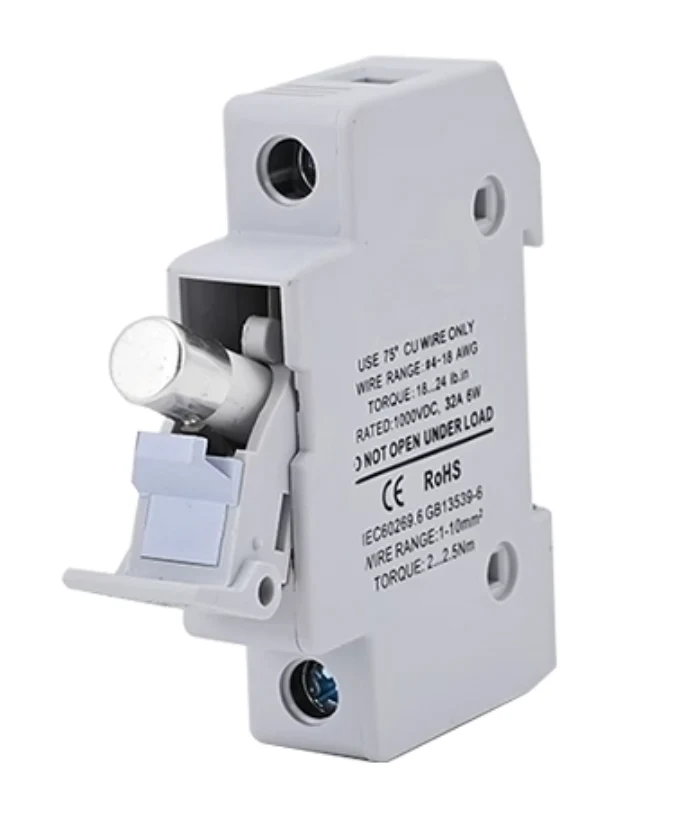
Standards and Code Requirements
Yêu cầu của Bộ luật Điện Quốc gia (NEC)
Article 690.9(C): Overcurrent devices must be rated for the maximum available fault current at their installation point.
Article 690.9(D): DC circuits require specific breaking capacity calculations based on system configuration.
Tuân thủ tiêu chuẩn quốc tế
| Tiêu chuẩn | Ứng dụng | Yêu cầu chính |
|---|---|---|
| IEC 60269-6 | DC fuses for PV applications | Breaking capacity testing methods |
| UL 2579 | DC fuses for PV systems | Safety and performance standards |
| IEC 61730 | PV module safety qualification | System-level protection requirements |
| UL 1741 | Inverter safety standard | Grid-tie protection coordination |
Selection Criteria for DC Fuse Breaking Capacity
Primary Selection Factors
- System Fault Current Analysis
- Calculate maximum prospective short-circuit current
- Include temperature variations and aging factors
- Consider future system expansions
- Installation Environment
- Ambient temperature effects on performance
- Altitude derating requirements
- Moisture and contamination exposure
- Yêu cầu phối hợp
- Upstream and downstream protection devices
- Selective coordination for system reliability
- Arc flash hazard reduction
Expert Selection Guidelines
For Residential Systems:
- Minimum 1,000A breaking capacity for small arrays
- 3,000A-6,000A for typical installations
- Consider 10,000A for future expansion capability
For Commercial Systems:
- 10,000A minimum for most applications
- 20,000A for large installations
- Custom calculations for utility-scale projects
Common Breaking Capacity Problems and Solutions
Problem 1: Inadequate Breaking Capacity Rating
Triệu chứng:
- Fuse fails to clear during fault
- Sustained arcing and equipment damage
- Safety hazards and code violations
Giải pháp:
- Recalculate system fault current
- Upgrade to higher breaking capacity fuses
- Verify installation meets current codes
Problem 2: Over-Specified Breaking Capacity
Triệu chứng:
- Unnecessarily high costs
- Oversized equipment requirements
- Complex installation procedures
Giải pháp:
- Optimize calculations for actual system needs
- Balance safety margins with practical requirements
- Consider standardization across installations
Professional Installation and Maintenance
Thực hành tốt nhất về cài đặt
- Verify Calculations: Always confirm breaking capacity requirements before installation
- Use Certified Components: Ensure fuses meet UL 2579 or equivalent standards
- Follow Manufacturer Guidelines: Adhere to specific installation requirements
- Document Specifications: Maintain records for inspection and maintenance
Yêu cầu bảo trì
Annual Inspections:
- Visual inspection for signs of thermal stress
- Verification of proper torque specifications
- Testing of protection coordination
Chỉ số thay thế:
- Physical damage or discoloration
- Blown fuses indicating system problems
- Upgraded system components requiring higher ratings
Quick Reference: Breaking Capacity Selection Chart
| PV System Type | System Size | Recommended Breaking Capacity | Safety Notes |
|---|---|---|---|
| Residential Small | 2-5kW | 1,000A – 3,000A | Minimum code compliance |
| Residential Medium | 5-10kW | 3,000A – 6,000A | Standard residential protection |
| Residential Large | 10-20kW | 6,000A – 10,000A | Enhanced protection recommended |
| Commercial Small | 20-100kW | 10,000A – 15,000A | Engineering analysis required |
| Commercial Large | 100kW-1MW | 15,000A – 30,000A | Professional design mandatory |
| Utility Scale | 1MW+ | 30,000A+ | Custom engineering required |
Những câu hỏi thường gặp
What happens if I use a fuse with insufficient breaking capacity?
If the breaking capacity is too low, the fuse may not be able to safely interrupt fault currents, potentially causing sustained arcing, equipment damage, fire hazards, and safety risks. The fuse could fail catastrophically during a fault condition.
How do I know what breaking capacity my PV system needs?
Calculate the maximum prospective short-circuit current based on your array configuration, module specifications, and environmental factors. The breaking capacity must exceed this calculated value with appropriate safety margins (typically 20% minimum).
Can I use AC fuses in DC applications?
No, AC fuses should never be used in DC applications. DC circuits require special fuse designs because they don’t have natural current zero crossings to help extinguish arcs. Always use fuses specifically rated for DC applications.
How does temperature affect breaking capacity requirements?
Cold temperatures increase the short-circuit current capability of PV modules, potentially requiring higher breaking capacity fuses. Hot temperatures can reduce fuse performance. Always consider temperature variations in your calculations.
What’s the difference between breaking capacity and current rating?
Current rating is the continuous current the fuse can carry without operating. Breaking capacity is the maximum fault current the fuse can safely interrupt. Both specifications are critical but serve different protection functions.
Do I need different breaking capacities for string and combiner fuses?
Yes, string fuses typically need lower breaking capacity (1,000A-3,000A) since they protect individual strings. Combiner fuses need higher breaking capacity (3,000A-20,000A+) because they see fault currents from multiple parallel strings.
How often should breaking capacity requirements be reviewed?
Review breaking capacity requirements whenever you modify the system (add modules, change configuration) or when codes are updated. Also review during major maintenance periods or after any protective device operations.
What standards govern breaking capacity for PV fuses?
Primary standards include UL 2579 for DC fuses in PV applications, IEC 60269-6 for international applications, and NEC Article 690 for installation requirements. Always verify current code requirements for your jurisdiction.
Expert Recommendations and Next Steps
For System Designers: Always perform detailed fault current analysis and select fuses with adequate safety margins. Consider future system expansion in your calculations.
For Installers: Verify breaking capacity specifications before installation and maintain detailed documentation for inspections and maintenance.
For System Owners: Work with qualified professionals to ensure your system meets current safety standards and code requirements.
Professional Consultation Recommended: For systems over 100kW or complex installations, consult with electrical engineers specializing in PV systems to ensure optimal protection design.
Understanding and properly applying DC fuse breaking capacity requirements is essential for safe, reliable, and code-compliant photovoltaic installations. When in doubt, always consult with certified professionals and err on the side of higher safety margins.
Có liên quan
Cách kiểm tra cầu chì DC bị hỏng trong hệ thống PV
Fuse Electrical Symbols: Complete Guide to Standards, Types & Applications

